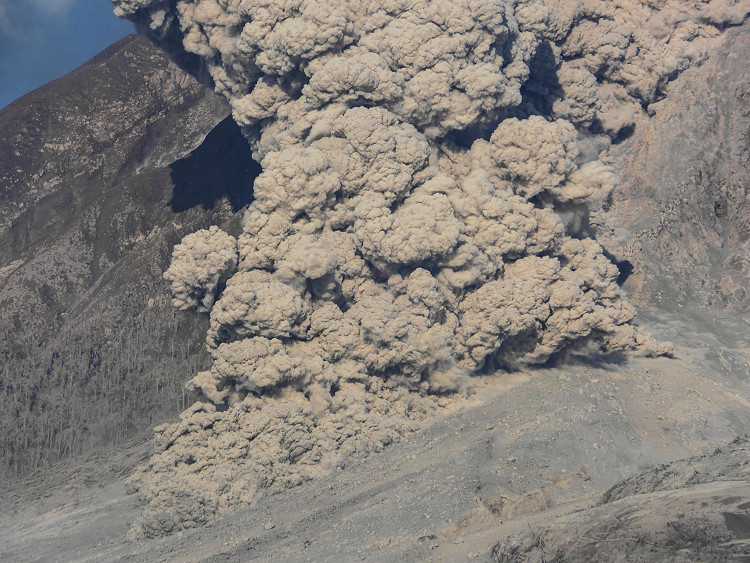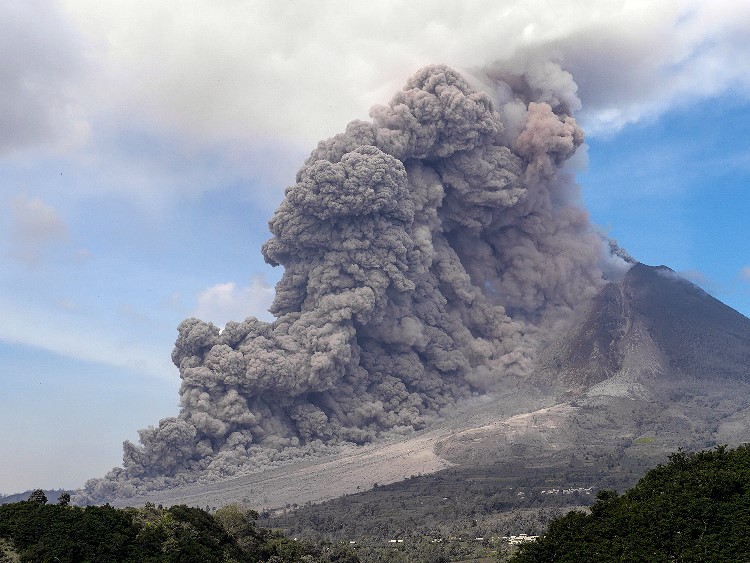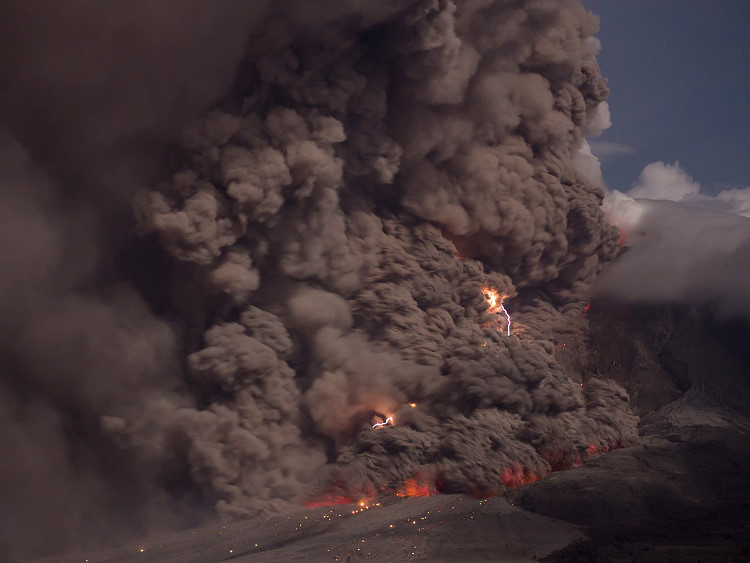Many manifestations of volcanism hold a great potential for danger. Especially destructive and dangerous are the pyroclastic flows. They often occur suddenly and unexpectedly, have a long range, reach high speeds and are almost silent.
Pyroclastic flows are a phenomenon that occurs mainly at subduction zone volcanoes. These volcanoes produce a particularly viscous lava from which gases can hardly escape.The lava swells out of the vent and accumulates to a lava dome. It can collapse, or strong explosions can occur from which pyroclastic flows can emerge.
3 types of pyroclastic flows
Pyroclastic flows can occur in 3 ways and are also called by different names in the technical literature (pyroclastic flow, glowing cloud and pyroclastic avalanche). In principle, however, they describe the same natural phenomenon: in a suspension of super hot gas and volcanic ash, lava chunks of different sizes are transported downhill. Ash and gas form a cloud that can rise several kilometers high. Near the ground the gas cushion is so hot that the volcanic ash glows. At night you can see very nicely a trace of glowing ash that marks the path of the pyroclastic flow. Hence the name glowing cloud.
Pictures of pyroclastic flows

Pyroclastic flow on Sinabung.

Pyroclastic flow on Sinabung.

Pyroclastic flow with volcanic lightning.
are formed when large packets of rock break off a lava dome. The gas dissolved in the lava is suddenly released and the lava rock fragments. This process continues while the first lava fragments race down to the valley. Therefore the pyroclastic flow grows as it descends the volcanic slope. For the first few meters, small pyroclastic flows are hardly distinguishable from a rockfall. A rockfall,or the departure of a small pyroclastic flow can destabilize the lava dome to such an extent that a large pyroclastic flow is created, or even the entire lava dome collapses and then explodes.
The bigger and steeper the lava dome is, the more likely the formation of pyroclastic flows is.
In the last years I could also often observe pyroclastic flows which came from the front of a very viscous lava flow, or which were created when a new lava flow burns its way through the volcano slope.
Base surges are formed by the collapse of large eruption clouds, preferably during plinian eruptions. If the gas in an eruption column is interrupted, the ejected pyroclastics can suddenly sink to the ground and race down the volcanic slope in the form of a pyroclastic flow. Incandescent avalanches contain more ash and gas and fewer large blocks than pyroclastic flows.
Glowing clouds (nuées ardentes) are formed during pelean eruptions. A sideways directed explosion amplifies the glowing cloud. More large lava blocks are transported.



